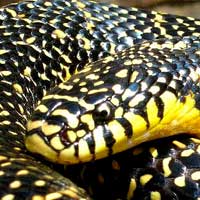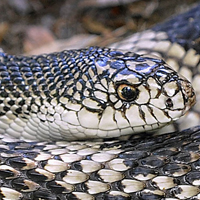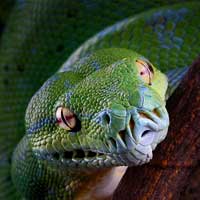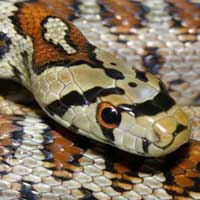New Mexico Milksnake: A Complete Care Guide
The New Mexico Milksnake is scientifically named Lampropeltis triangulum celaenops. It belongs to the Colubridae family, which is a large and diverse group of non-venomous snakes.
Scientific Name: Lampropeltis triangulum celaenops
Snake Family: Colubridae
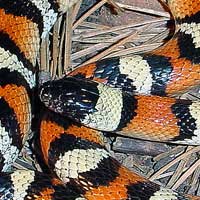
New Mexico Milksnake: An Overview
The New Mexico Milksnake (Lampropeltis triangulum celaenops) is a captivating subspecies of the milksnake, renowned for its vibrant red, black, and cream or yellow banding. Native to the southwestern United States, this non-venomous snake is highly sought after by reptile enthusiasts for its manageable size and calm demeanor. The New Mexico Milksnake is an excellent pet for both beginners and experienced snake keepers. This guide delves into its habitat, diet, behavior, and care requirements.
Where Does the New Mexico Milksnake Live?
The New Mexico Milksnake thrives in arid and semi-arid environments. Understanding its natural habitat is crucial to creating a suitable enclosure in captivity.
| Habitat Feature | Description |
|---|---|
| Geographic Range | Southwestern United States, particularly New Mexico |
| Preferred Environment | Grasslands, desert edges, and rocky outcrops |
| Climate | Arid to semi-arid, with low to moderate humidity |
What Does the New Mexico Milksnake Eat?
The New Mexico Milksnake is a carnivore, preying on small mammals, birds, reptiles, and amphibians in the wild. Providing a well-balanced diet in captivity ensures their health and longevity.
- Juveniles: Feed on pinky mice every 5-7 days.
- Adults: Feed on adult mice or small rats every 7-10 days.
- Prey Size: Ensure prey is no larger than 1.5 times the snake’s girth.
- Hydration: Provide fresh water daily for drinking and occasional soaking.
Behavior and Temperament of the New Mexico Milksnake
The New Mexico Milksnake is known for its shy yet curious nature, making it an enjoyable pet for observation and interaction. With regular handling, it becomes more confident and relaxed.
- Shy Nature: Prefers hiding spots but adjusts well to handling.
- Activity Level: Primarily nocturnal but may explore its environment during the day.
- Defensive Behavior: Rarely bites but may exhibit tail vibrations or musk when startled.
How to Ensure a Healthy and Long Life for the New Mexico Milksnake
With proper care, the New Mexico Milksnake can live up to 20 years in captivity. Regular health checks and maintaining optimal environmental conditions are key to its well-being.
| Health Issue | Symptoms | Prevention |
|---|---|---|
| Respiratory Infections | Wheezing, open-mouth breathing | Maintain proper humidity and temperature |
| Skin Shedding Issues | Incomplete or stuck sheds | Ensure adequate humidity levels |
| Parasites | Visible mites, itching | Regularly clean and disinfect the enclosure |
Reproductive Traits of the New Mexico Milksnake
The New Mexico Milksnake is oviparous, laying eggs rather than giving live birth. Breeding them in captivity can be a rewarding experience for reptile enthusiasts.
- Mating Season: Late spring to early summer.
- Incubation Period: Approximately 60-65 days.
- Clutch Size: Typically 6-12 eggs.
- Maintain an incubation temperature of 80-85°F for optimal egg development.
How to Handle and Care for the New Mexico Milksnake
Caring for the New Mexico Milksnake is straightforward, making it a suitable pet for beginners and experienced keepers alike. Proper handling and enclosure maintenance are essential for its health.
- Provide an enclosure with a temperature gradient of 75-85°F.
- Use a substrate like aspen shavings or coconut fiber for burrowing.
- Include hiding spots, climbing branches, and enrichment items.
- Handle gently and regularly to build trust and reduce stress.
- Ensure the enclosure is cleaned frequently and fresh water is always available.



